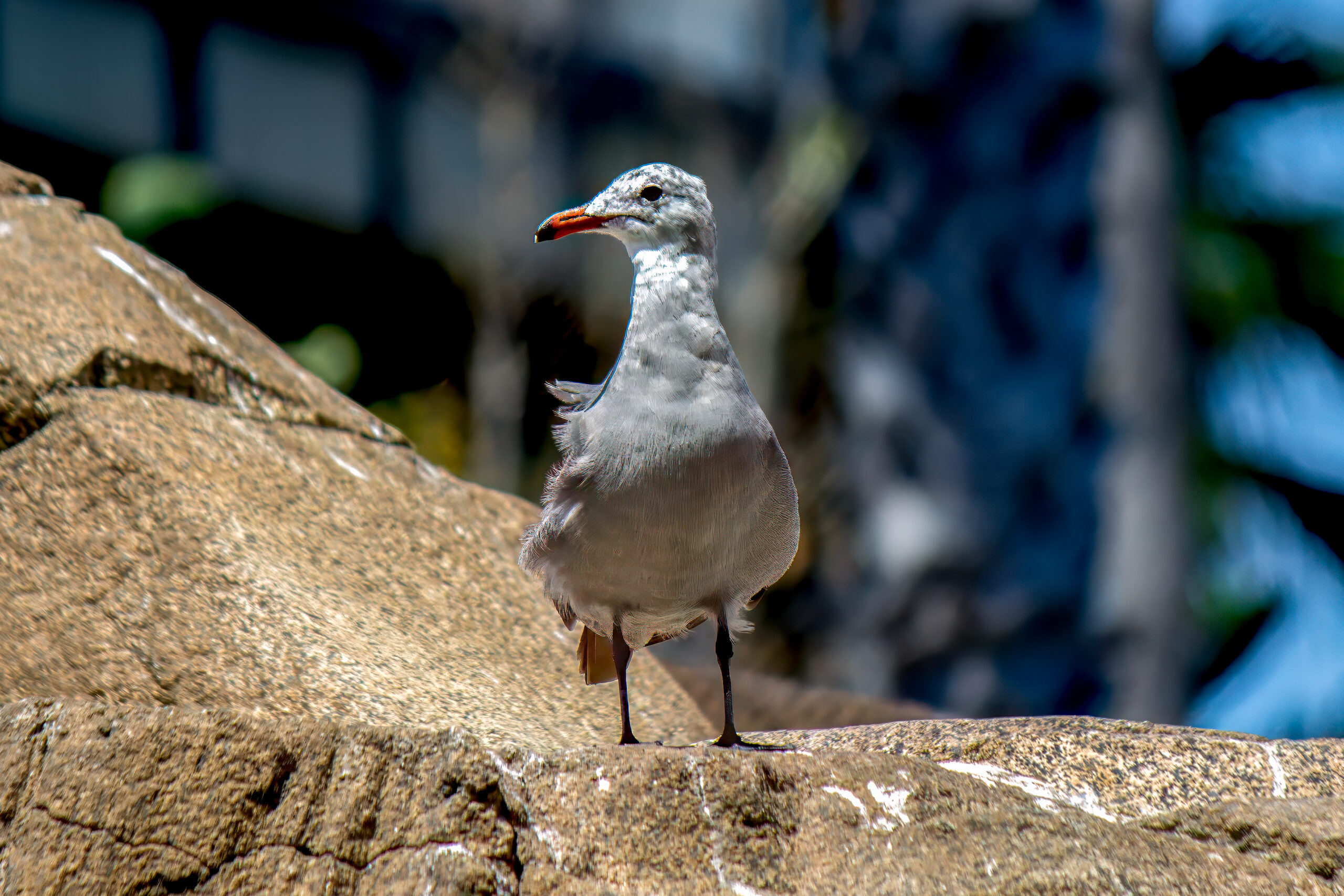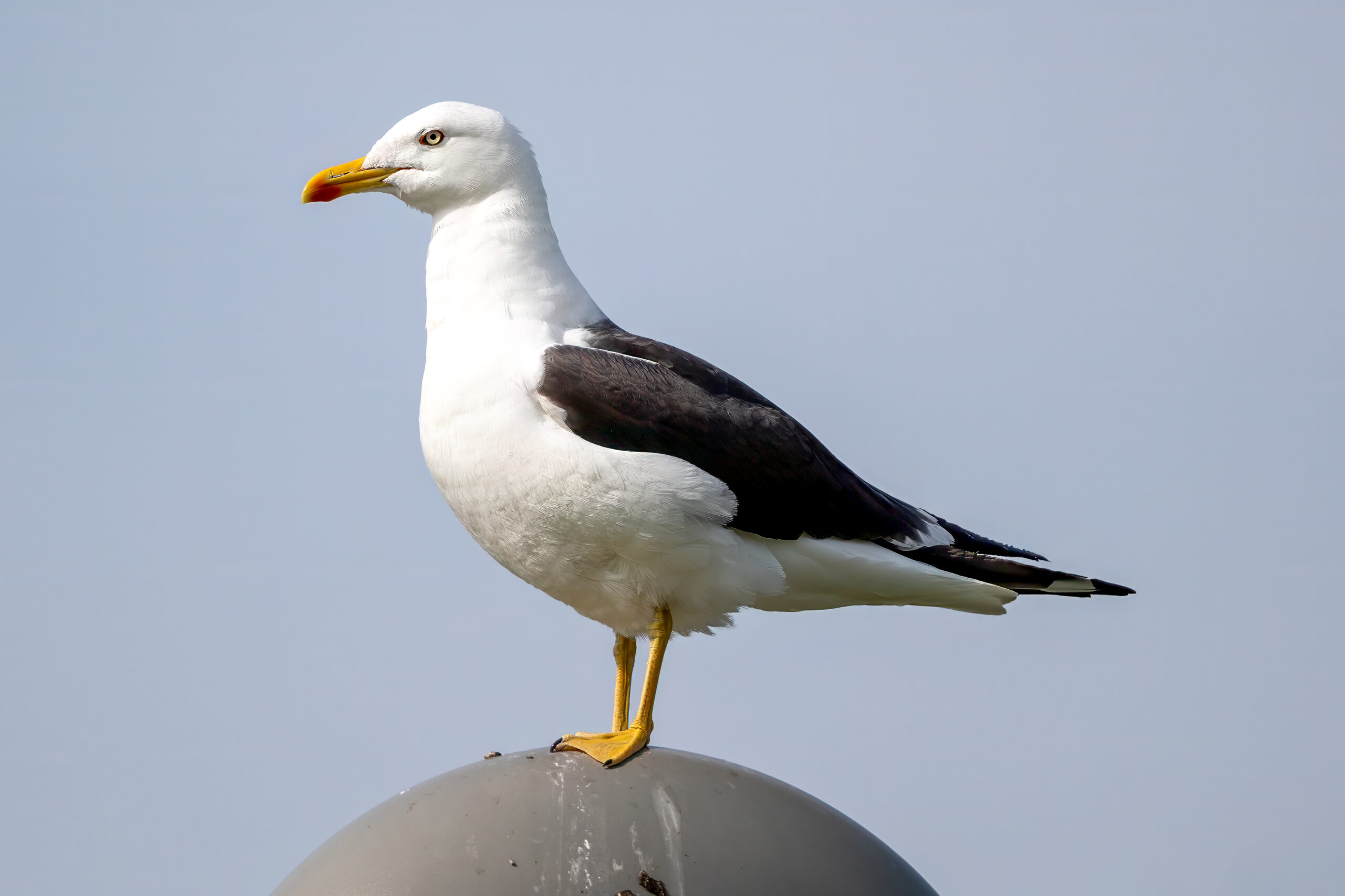Description
The western gull (Larus occidentalis) is a large, predominantly white gull with a heavy build, native to the western coast of North America (from Baja California, Mexico, to Canada). It has a distinctive dark gray back and wingtips marked with white spots. Adults have a yellow bill with a red spot on the lower mandible, and their legs are pink. They are typically around 55-68 cm in length, with a wingspan of 130-144 cm. Western gulls can be differentiated from similar species, such as the close relative the glaucous-winged gull (Larus glaucescens), by their much darker back. These two species do hybridize in the northern part of the Western gull range. Both these species are also larger and bulkier than the California gull (Larus californicus), which has greenish yellow legs.
Diet & habitat
Western gulls are commonly found along coasts, in bays, harbors, beaches, and offshore islands. They are opportunistic feeders, preying on fish, marine invertebrates, and carrion. They also scavenge at garbage dumps and are known to steal food from other birds. Their feeding strategies vary; they drop hard-shelled prey onto rocks from the air to break them open and often follow fishing boats to feed on discarded bycatch. In urban areas, they have adapted well to human presence and are often seen in large numbers at harbors and beaches, interacting with people.
Nesting
The breeding season starts in April. Western Gulls form monogamous pairs and exhibit nest fidelity, often returning to the same nesting sites each year. Nests are typically built on the ground or cliffs using grass, seaweed, and feathers. Females lay 2-3 eggs, with incubation lasting about a month, primarily performed by the female. Chicks fledge in about seven weeks. Both parents are involved in feeding and protecting the chicks.
Status
The western gull population is stable or increasing, and the species is not considered to be facing any significant threats. However, they are vulnerable to oil spills and human disturbance at nesting sites. It is listed as least concern on the IUCN Red List.







